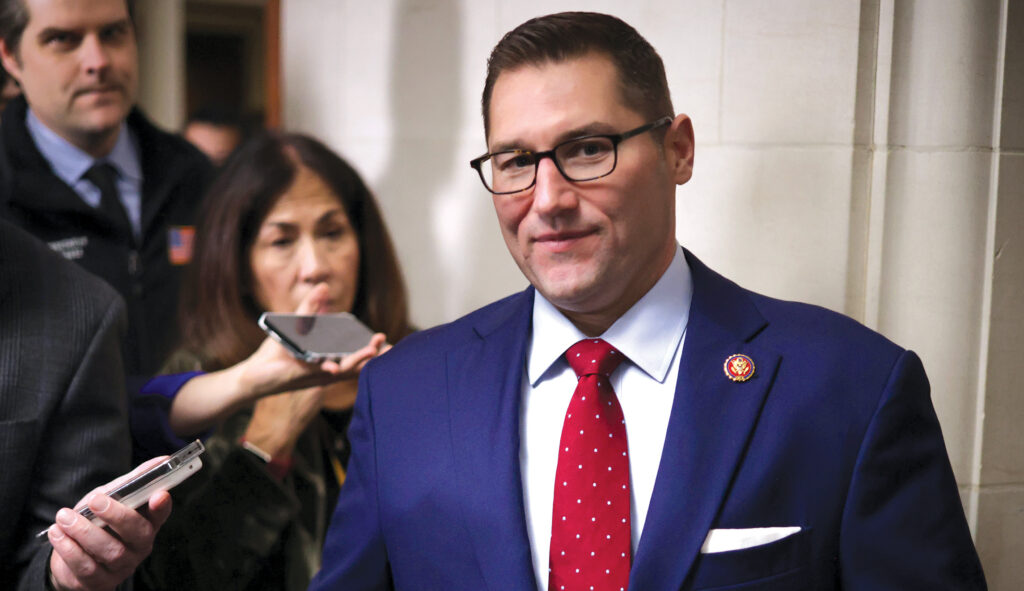CDC: Majority of Children Recovered from COVID-19, but 1% Experience ‘Long COVID’
1% of Children in the US Experience “Long COVID,” CDC Report Finds
While many children who contracted COVID-19 got through it unscathed, U.S. health officials said in a new report that around 1 percent of children in the United States have experienced what’s known as “long COVID.”
The report from the Centers for Disease Control and Prevention (CDC) found that 0.5 percent of U.S. children had long COVID at the time they were interviewed in 2022.
Meanwhile, 1.3 percent reported at the time that they had—at some point or other—experienced long COVID, which was defined as the presence of symptoms for at least 3 months after having COVID-19, based on either a doctor’s diagnosis or a positive test.
Related Stories
By contrast, 6.9 percent of all U.S. adults said they suffered long COVD at some point, per an earlier CDC report, while 3.4 percent said they had it when polled.
The findings of the CDC’s long COVID studies dovetail with previous findings that the disease is less severe in children than in adults.
While some children are at risk of severe disease, the CDC says that COVID-19 in young children and adolescents typically occurs as a mild or asymptomatic illness.
According to CDC data on mortality, between 2020 and 2023, roughly 1.3 percent of deaths of those aged 0–17 years in the United States were attributed to COVID-19. Specifically, 1,696 fatalities among those under the age of 18 were classified as “COVID-19 deaths” out of a total of 130,970 deaths within that age group.
By contrast, roughly 1.4 million deaths among those over 18 were attributed to COVID-19, out of a total number of around 15.2 million deaths due to all causes between 2020 and 2023, or roughly 8 percent.
Meanwhile, a recent analysis suggests distortion of data on long COVID and that undue alarm has been raised over symptoms that researchers say are common to other respiratory viruses.
In a paper published in BMJ Evidence-Based Medicine (pdf) on Sept. 25, researchers said high rates of long COVID continue to be reported in academic journals, but these scientific publications are overestimating the prevalence of the condition due to overly broad definitions, lack of proper control groups, and other methodological flaws.
The unintended consequences of distorted data about long COVID may contribute to increased societal anxiety and health care spending, according to the researchers.
Other problems of exaggerated risks of long COVID include a failure to diagnose treatable conditions misdiagnosed as long COVID, as well as shifting of funds and awareness away from people actually experiencing chronic conditions brought on by COVID-19.
More Details on CDC’s Long COVID Studies
According to the CDC study into long COVID in minors, older children were more likely to have experienced long COVID—or had long COVID at the time they were interviewed.
Children aged 12–17 years were the group most likely (2.0 percent) to have had long COVID, followed by those aged 0–5 years (1.0 percent) and children aged 6–11 years (0.8 percent).
The pattern was much the same for “current” long COVID, meaning those who reported having symptoms that had persisted longer than three months when they were interviewed in 2022.
Those most likely to report having current long COVID were children aged 12–17 years (0.8 percent), followed by those aged 6–11 years (0.3 percent) and 0–5 years (0.2 percent).
Meanwhile, data from the Nationwide Commercial Laboratory Seroprevalence Survey show that, as of December 2022, 91.9 percent of children had antibodies indicating a previous COVID-19 infection.
Broken down by age, it is estimated that 86.8 percent of children ages 0–4 years had at one point been infected with COVID-19, with that figure growing to 93.5 percent in those ages 5–11 years, and 93.0 percent in those ages 12–17 years.
There were also differences by age in the CDC’s adult long COVID study.
Adults aged 35–49 (8.9 percent) were more likely than adults ages 18–34 (6.9 percent), 50–64 (7.6 percent), and 65 and older (4.1 percent) to have had long COVID at some point in their lives.
More Federal Money for Long COVID
The CDC reports on long COVID come on the heels of an announcement by the federal government to award some $45 million in grants to help clinics treating long COVID develop new models of care and expand access, according to the Department of Health and Human Services (HHS).
Nine clinics will receive $1 million grants annually over the next five years through the Agency for Healthcare Research and Quality within HHS, the department said.
“The Biden-Harris Administration is supporting patients, doctors and caregivers by providing science-based best practices for treating long COVID, maintaining access to insurance coverage, and protecting the rights of workers as they return to jobs while coping with the uncertainties of their illness,” HHS Secretary Xavier Becerra said in late September.
The funding will be used for increasing in-person and virtual visits, establishing new satellite clinics, and an education initiative aimed at growing referrals. Limited knowledge and acceptance among clinicians has reportedly contributed to delays in diagnoses and referrals.
Meanwhile, a recent study has challenged the mainstream narrative that COVID-19 vaccinations reduce the risk of long COVID.
The study, which was carried out by researchers from Martin Luther University Halle-Wittenberg in Germany, found that previous infections reduced the risk of long COVID by 86 percent. By contrast, vaccination status prior to COVID-19 infection was irrelevant to the risk of developing long COVID.
“Vaccination offered no meaningful protection against developing PCC [post-COVID condition] in case of an infection. In contrast, there was … strong evidence that a previous infection reduced the risk of PCC,” wrote the authors of the study.
What measures can be taken to support children with long COVID and mitigate its impact on their health and well-being
Implications of the CDC Report on Children with Long COVID
A recent report from the Centers for Disease Control and Prevention (CDC) has shed light on the impact of COVID-19 on children in the United States. The report found that approximately 1 percent of children in the country have experienced what is known as “long COVID.”
The study, conducted in 2022, revealed that 0.5 percent of children had long COVID at the time they were interviewed. Additionally, 1.3 percent reported experiencing long COVID at some point,
" Conservative News Daily does not always share or support the views and opinions expressed here; they are just those of the writer."





